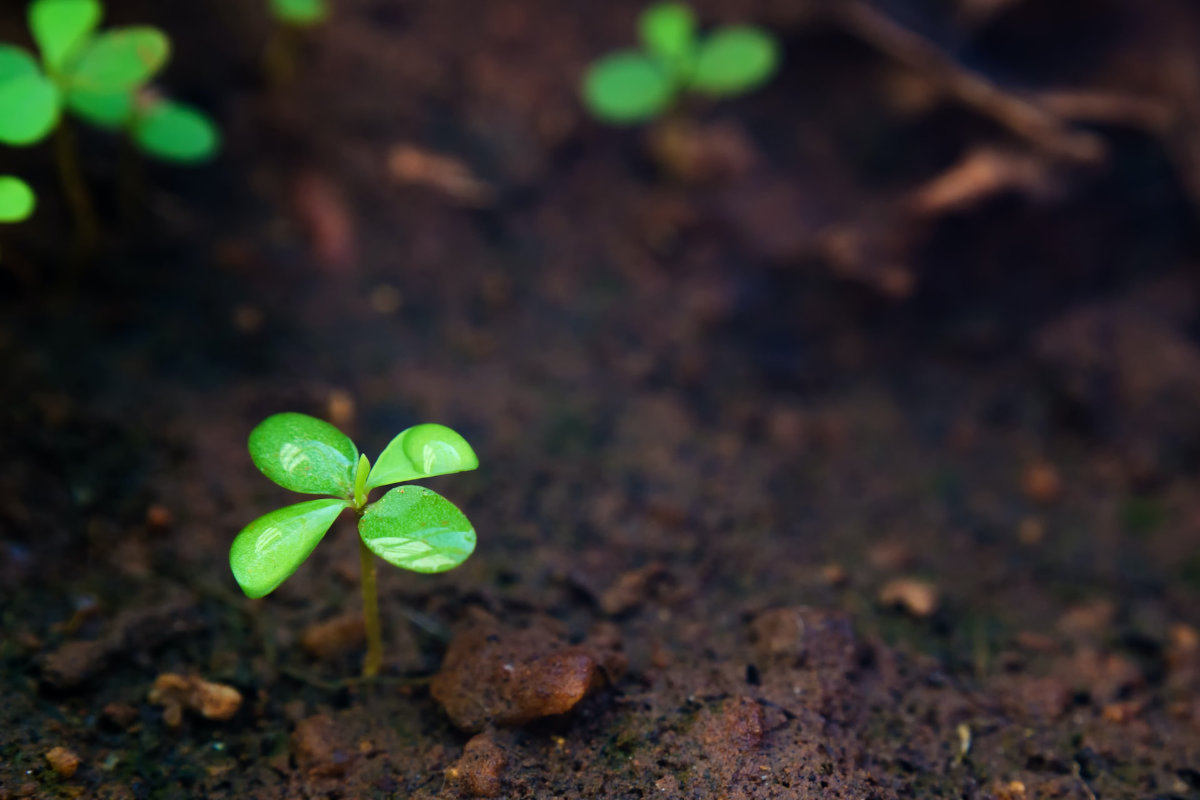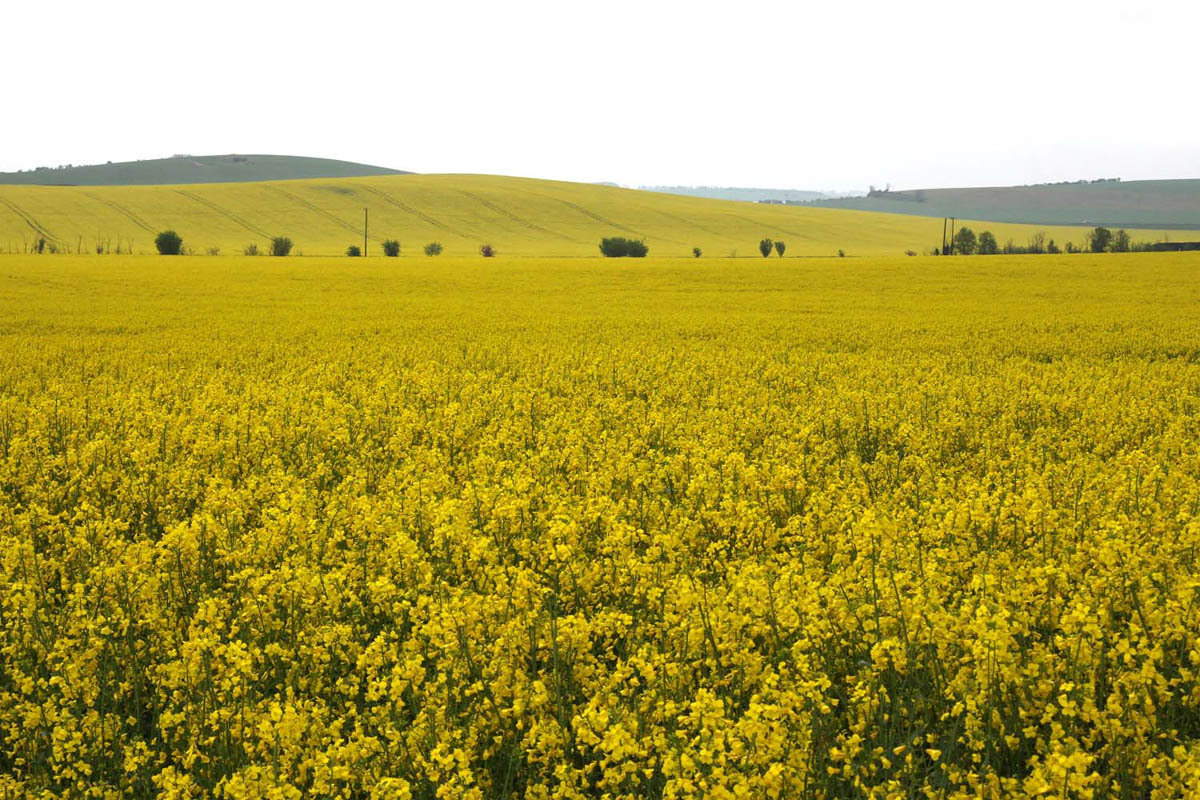
Farming from the ground up – George Monbiot’s latest book puts food production under the microscope.
It’s time to harvest the last of the main crop potatoes, but I have a dilemma. How do I get them out of the ground without disturbing the soil?
I have been reading George Monbiot’s book: Regenesis. He devotes a large part of the first chapter to describing the amazing activity going on in the ground beneath our feet. Completely invisible to the naked eye is a hive of activity that maintains the balance of nutrients in the soil which support plant life. We interfere with this ecosystem when we dig, when we trample, when we fertilise, when we kill. I do tend to apologise when I inadvertently skewer a worm (if no one’s around, that is) but, until now, hadn’t thought of the worm as being “an animal on which, perhaps above all others, our lives depend”. Every gardener should read this chapter.
I recall a friend of my parents, a small farmer, commenting that if one crop had a bad year, another would have a good year; overall it was never a complete disaster. It was a mixed farm; it just worked that way. Whilst mergers and acquisitions bring economy of scale and increased efficiency, they also bring the loss of resilience that comes with having all your eggs in one basket. Rape was once a popular crop with farmers as it could be used for animal food, human food or biofuel. Pests love repeat crops, it helps them grow strong enough to resist pesticides. Those rolling fields are hardly seen today, since the oilseed rape beetle devasted crops across the land a few years ago. A classic example of farming on a large scale at the expense of crop resilience.

I was shocked by these facts – do feel free to prefix each statement with “just”:
- Four companies control 90 per cent of the global grain trade;
- four companies control 66 per cent of the world’s agricultural chemical market;
- four companies (and this includes three of the above) own 53 per cent of the global seed market;
- three corporations sell almost half the world’s farm machinery;
- four companies control 99 per cent of the global chicken breeding market; and
- four firms run 75 per cent of the world’s corporate abattoirs.
It is a similar picture for land ownership, with many so called ‘farmers’ (actually investment banks, hedge funds and the like) controlling over 70 per cent of the world’s farmland. If land is viewed as an asset to be managed like stocks and shares, seeking big returns in the short term, it is unlikely to involve good husbandry. With this degree of control the key players can dictate what crops are grown, what animals are reared – and how and where. In effect, they control what we eat, our very diet.
Feeding our appetite for meat is particularly damaging, even more so than I had thought. Two things I didn’t know:
- Almost half the agricultural land across the planet is used solely for growing animal feed – and this is in addition to grazing land. If it were not so, and if yields were spread fairly, more than enough food could be grown to eliminate malnutrition across the globe.
- I always thought sewage was the biggest pollutant of our rivers. Not so. If taken across the whole of the UK, farming beats sewage – and we all know the size of the sewage problem.
Having spelt out the importance of soil health and the damage caused by intensive farming – especially stock farming, Mr Monbiot visits three farms, seeking to learn how we might produce more food with less intervention. Each farmer is in it for the long term, with the objective of nurturing the land, but each has a slightly different approach. For example, one ploughs, so does not need herbicide, another uses herbicide so does not need to plough. Using worm population as an indicator of soil health, ploughing has been shown to do more damage than herbicides; that surprised me. All three farmers practice crop rotation and maintain wildlife corridors and, crucially, have seen healthier soil and improved yields since adopting these systems. But are they financially sustainable? Probably not; each farmer benefits from some form of financial advantage, without which they would struggle to keep afloat.
So what’s to be done? We cannot continue with ‘business as usual’ – the planet simply cannot take it. Fortunately, scientific research is providing some answers.
The Land Institute, a not-for-profit organisation, has developed a perennial grain crop that ticks almost all the boxes in terms of maximum yield with minimal land damage. There are similar developments around the world with sunflower seeds and rice grain. Another exciting project is taking place in a laboratory in Helsinki where scientists are producing a ‘bacteria soup’ – not as unappetising as it sounds. The end product is a flour that is 60 per cent protein and contains all nine of the essential amino acids. We already use this technology for the manufacture of insulin and rennet, but it has the potential to produce a very wide variety of foods, including ‘meat-lookalikes’, cheaply and in bulk. But – and the author thinks this is a big but – will people dismiss their image of the ‘rural idyll’ and see the farming landscape for what it really is? Are they prepared to give up meat, fish and dairy products and replace them with food made from fermented bugs? The time may come when they have no choice.
This is a scientifically-based book, very well researched, but an easy read and not the least bit dry. I laughed out loud several times (look out for “handcuffs” and “jelly babies”). The backdrop of the author’s orchard allows for a beautifully crafted opening and closing, and the book ends with this message of hope: “We are, I think, soon to encounter a moment when conditions change.” If only in terms of helping us change our mind set, Mr Monbiot will have been an important contributor to that change.
The author wishes to express her thanks to her grandson who gave her the book for Christmas.
‘I love the idea of his generation showing my generation the way forward!’





